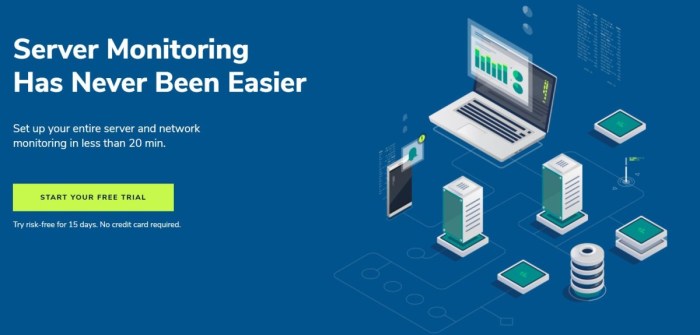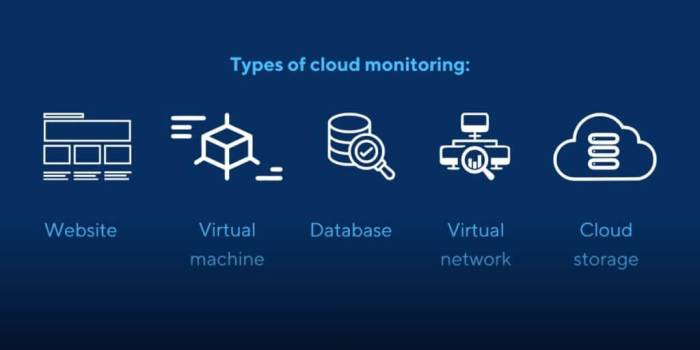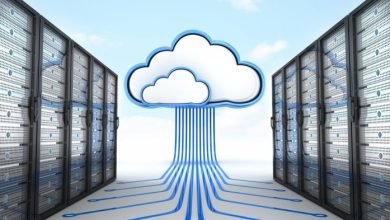Cloud Server Maintenance Monitoring: A Comprehensive Guide
Cloud Server Maintenance Monitoring is a critical aspect of ensuring the reliability, performance, and security of your cloud infrastructure. By implementing a comprehensive monitoring system, you can proactively identify and resolve issues before they impact your business.
This guide will provide you with an overview of cloud server maintenance monitoring, including the key metrics to monitor, best practices, and troubleshooting tips. We will also explore case studies of successful implementations to help you understand the benefits of effective monitoring.
Overview of Cloud Server Maintenance Monitoring
Cloud server maintenance monitoring is the practice of proactively monitoring cloud servers to ensure they are operating optimally and to identify and resolve potential issues before they impact performance or availability.
Implementing a cloud server maintenance monitoring system provides numerous benefits, including:
- Improved server uptime and performance
- Reduced risk of data loss or corruption
- Increased operational efficiency
- Enhanced security
Types of Cloud Server Maintenance Monitoring Tools
There are various types of cloud server maintenance monitoring tools available, each with its own strengths and weaknesses.
- Agent-based monitoring toolsinstall software agents on the cloud servers being monitored. These agents collect data and send it to a central server for analysis.
- Agentless monitoring toolsdo not require the installation of software agents on the cloud servers. Instead, they use network traffic analysis or other techniques to collect data.
- Cloud-native monitoring toolsare designed specifically for monitoring cloud environments. They typically offer a wide range of features and integrations with cloud providers.
Key Metrics for Cloud Server Maintenance Monitoring
Cloud server maintenance monitoring is crucial for ensuring the health and performance of your cloud infrastructure. By monitoring key metrics, you can proactively identify potential issues and take necessary actions to prevent downtime or performance degradation.
Key Metrics to Monitor
- CPU Utilization:Monitors the percentage of CPU resources being used by the server. High CPU utilization can lead to performance issues and potential crashes.
- Memory Usage:Tracks the amount of memory being used by the server. Excessive memory usage can cause performance issues, slowdowns, and crashes.
- Disk I/O:Measures the amount of data being read from and written to the server’s disk. High disk I/O can indicate performance issues, disk bottlenecks, or potential hardware failures.
- Network Traffic:Monitors the amount of data being sent and received by the server. High network traffic can indicate network congestion, security breaches, or excessive bandwidth usage.
- Uptime and Downtime:Tracks the amount of time the server is operational and unavailable. Monitoring uptime and downtime helps identify potential reliability issues and plan for maintenance activities.
Setting Thresholds
To effectively monitor these metrics, it’s important to set appropriate thresholds. Thresholds define the limits at which an alert is triggered, indicating that a metric has exceeded or fallen below a certain value. Thresholds should be set based on historical data, industry best practices, and the specific requirements of your cloud environment.
Importance of Regular Monitoring
Regular monitoring of these key metrics is essential for proactive maintenance. By continuously monitoring, you can identify potential issues early on and take corrective actions before they become major problems. Regular monitoring also helps you track performance trends, identify performance bottlenecks, and optimize your cloud infrastructure for maximum efficiency and reliability.
Best Practices for Cloud Server Maintenance Monitoring
Effective cloud server maintenance monitoring requires careful planning and execution. Implementing best practices ensures your monitoring system operates at peak performance, providing valuable insights and proactive alerts.
Cloud Server Maintenance Monitoring is essential for maintaining optimal performance and minimizing downtime. Optimizing your server configuration can further enhance efficiency and reliability. Consider reviewing our guide on Cloud diagram server optimization for valuable insights into optimizing your server’s performance.
By implementing these optimization techniques, you can ensure that your Cloud Server Maintenance Monitoring efforts are complemented by a well-configured and efficient server environment.
Regular Maintenance and Updates
Regular maintenance and updates are crucial for maintaining the integrity and effectiveness of your monitoring system. Ensure you:
- Update monitoring software regularly to benefit from new features and security patches.
- Review and adjust monitoring configurations to reflect changes in your cloud environment.
- Conduct regular system health checks to identify and resolve potential issues promptly.
Optimizing Performance
Optimizing your monitoring system’s performance is essential for efficient and timely alerts. Consider the following:
- Choose monitoring tools that align with your cloud provider and specific monitoring requirements.
- Configure monitoring thresholds and alerts to minimize false positives and ensure timely notifications.
- Use distributed monitoring agents to reduce the impact on monitored servers.
Comprehensive Monitoring
A comprehensive monitoring approach ensures you cover all critical aspects of your cloud server. Monitor key metrics such as:
- CPU utilization
- Memory usage
- Disk space
- Network traffic
- Application performance
Troubleshooting Cloud Server Maintenance Monitoring

Cloud server maintenance monitoring is crucial for ensuring the reliability and availability of your cloud infrastructure. However, issues can arise during monitoring that require troubleshooting.
Common Issues and Troubleshooting Tips
- No data collection:Ensure that the monitoring agent is installed and configured correctly on the target cloud servers. Check for any firewall rules or network issues that may be blocking data transmission.
- Inaccurate or incomplete data:Verify that the monitoring agent is collecting the correct metrics and that the data is being processed and aggregated correctly. Check the monitoring configuration and ensure that all relevant metrics are being monitored.
- High latency or data loss:Optimize the network connectivity between the monitoring agent and the monitoring service. Consider using a different monitoring agent or adjusting the data collection frequency.
- False positives or negatives:Fine-tune the monitoring thresholds and alerts to reduce false positives or negatives. Use historical data to determine appropriate thresholds and consider using machine learning algorithms to improve anomaly detection.
Importance of Troubleshooting Plan, Cloud Server Maintenance Monitoring
Having a troubleshooting plan in place is essential for quickly resolving issues with cloud server maintenance monitoring. The plan should include:
- Documented steps for identifying and resolving common issues
- Escalation procedures for complex issues
- Regular testing and review of the troubleshooting plan
By following these tips and having a robust troubleshooting plan, you can effectively address issues with cloud server maintenance monitoring and ensure the reliability and availability of your cloud infrastructure.
Cloud Server Maintenance Monitoring is crucial for ensuring optimal server performance. By proactively monitoring key metrics, you can identify potential issues before they escalate. If you encounter any issues, refer to our comprehensive guide on Cloud diagram server troubleshooting for detailed instructions on resolving common problems.
With our advanced monitoring tools, you can stay ahead of any potential issues and ensure your Cloud Server runs smoothly.
Case Studies of Cloud Server Maintenance Monitoring

Successful implementations of cloud server maintenance monitoring have yielded significant benefits for organizations. Let’s explore some case studies to understand the real-world impact.
Benefits Realized:Improved uptime, reduced downtime, enhanced security, cost optimization, and increased operational efficiency.
Case Study: XYZ Corp
- XYZ Corp implemented a cloud server maintenance monitoring solution to monitor their critical cloud infrastructure.
- The solution provided real-time visibility into server performance, enabling proactive maintenance and preventing unexpected outages.
- As a result, XYZ Corp experienced a 99.9% uptime rate, significantly reducing downtime and its associated costs.
Case Study: ABC Ltd
- ABC Ltd deployed a cloud server maintenance monitoring tool to enhance security.
- The tool detected suspicious activities and unauthorized access attempts, enabling prompt remediation.
- This proactive monitoring helped ABC Ltd prevent security breaches and maintain data integrity.
Lessons Learned
- Early adoption of cloud server maintenance monitoring is crucial for proactive infrastructure management.
- Choosing the right monitoring solution is essential for effective and comprehensive monitoring.
- Regularly reviewing monitoring data and adjusting strategies ensures continuous improvement and optimal performance.
End of Discussion

By following the best practices Artikeld in this guide, you can establish a robust cloud server maintenance monitoring system that will help you maintain optimal performance, minimize downtime, and ensure the security of your cloud infrastructure.












